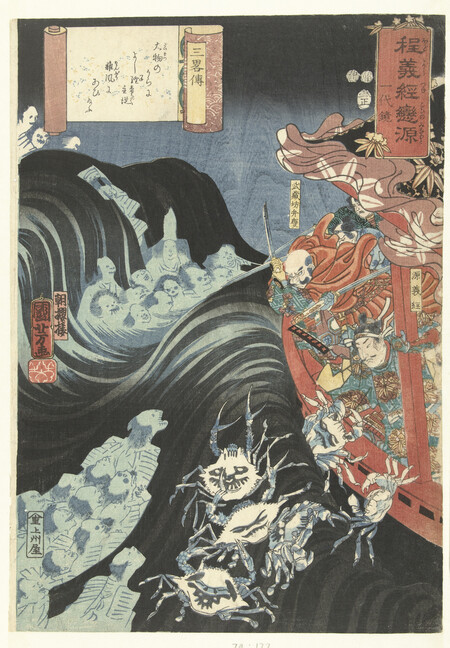Seeing faces on a wall or in any daily object is not a symptom of madness. This phenomenon has a name: pareidolia, and that is what makes us perceive as something recognizable a form that initially has no pattern. If we put effort, we can see recognizable forms in almost anything, even in the shell of a crab. And, if not, they tell the Japanese and their samurai crabs that keep the spirit of the fallen warriors in a battle.
Or so the legend says.
Hehihani. Los Heikeopsis japonica They are a family of crabs that inhabit, mainly, in Japan. They have been found in some other western Pacific areas, but where they are more numerous in the Japanese country and, specifically, in the inner sea. They live in shallow waters in which they camouflage and find food, and could be normal crabs if not for their shell.
Because, if in the photos that accompany this article you see a mascara diminished traditionally used by the samurais of feudal Japan at the top of the crab, you should know that you are not the only one. And, how could it be otherwise, Japanese folklore has an explanation for this phenomenon.
The legend. At the end of the 12th century, the Genji clan and the Heike clan fought in a bloody battle in the Dan-No-Aura bay, in the inner sea of Japan. The Heike had ruled for decades, but the Genji wanted power and were more numerous. They won the battle and established a warriors government in Japan, a shogunate that lasted for seven centuries while their enemies fell into the bay under steel or directly drowned.
It is said that the spirits of those Heike warriors who drowning were reincarnated in the living beings who caught more by hand, the crabs, and thus these Heikegani were born. Samurai crabs changed their shells, adopting the patterns of the faces and masks of the fallen warriors, and culturally they are a symbol of resistance and loyalty.

Antinatural selection. It is a beautiful story, but unfortunately it is nothing more than something belonging to the rich Japanese folklore. Now, it is evident that these ‘samurai crabs’ have something special and, certainly, their shell is very similar to the masks. The explanation? Well, according to Carl Sagan – yes, the famous astronomer – the Heikegani were created from the artificial selection.
They are edible and fish by the premises, but in the process of selecting individuals, the fishermen kept the “normal” crabs and returned to the water those who showed that pattern in the shell. It was a sign of respect for the heike warriors, and Sagan popularized the idea that these selected crabs were reproduced, perpetuating that curious design.

Simple coincidence? However, there are those who doubt this story and offers an alternative vision. Joel Martin is a biologist associated with the Department of Invertebrates Zoology in the Los Angeles Natural History Museum and has dedicated his career to investigate the evolution of crustaceans and other invertebrates. One of his most famous works is the work on the Samurai crab published in 1993- in it, he states that humans practically did not consume Heikegani, so the selective pressure would be minimal or non-existent.
Functionality. Your explanation? That these facial patterns similar to masks are due to the functional anatomy of the crab, since they represent the muscular insertion points very similar to crabs that we see in other parts of the world. If we see the crab backwards (they are more ugly than a refrigerator from behind), it has all the meaning and the researcher points out that this interpretation we make of their faces is simply one more example of pareidolia.
Martin may be right, but I definitely stay with the version that Samurai crabs are there watching the battle spirits in the bay in which Japan changed forever.
Imagen | National Museum of Natural History
In WorldOfSoftware | Japan is living something unpublished in its most emblematic neighborhoods: the “chinification” of anime and video games
